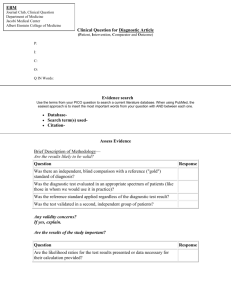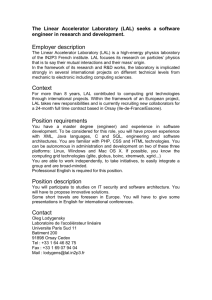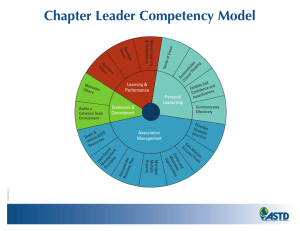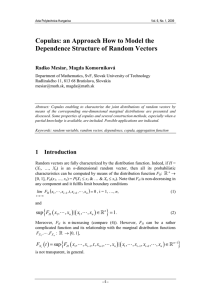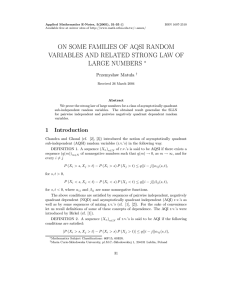Visit of Assoc. Prof. Alexander De Leon
advertisement
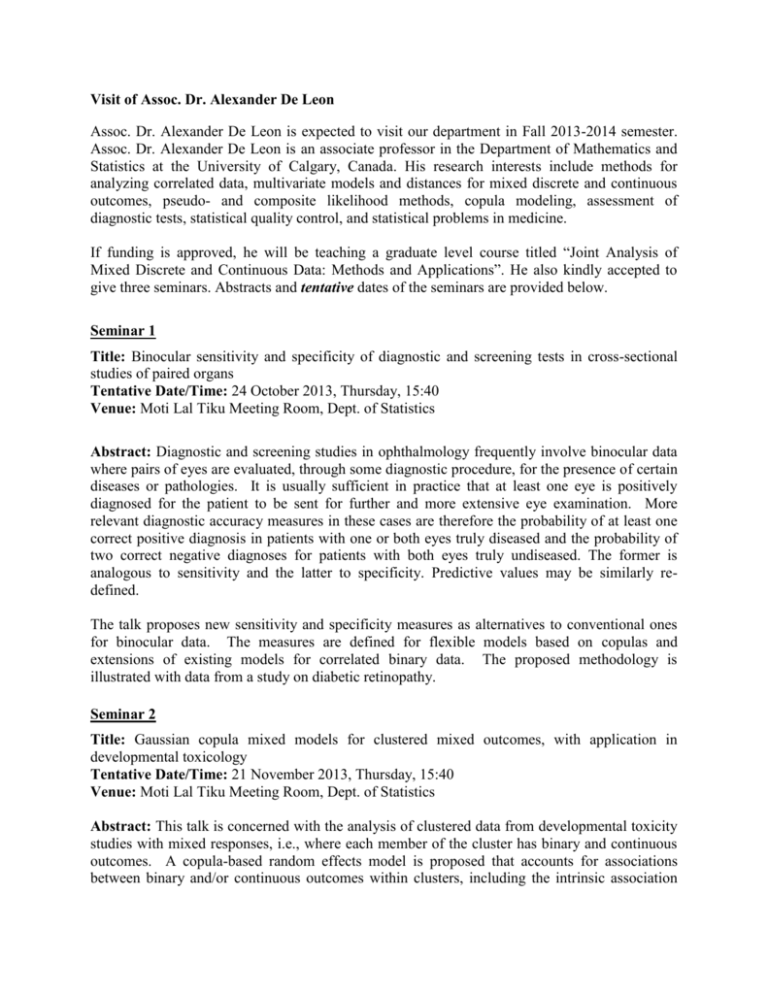
Visit of Assoc. Dr. Alexander De Leon Assoc. Dr. Alexander De Leon is expected to visit our department in Fall 2013-2014 semester. Assoc. Dr. Alexander De Leon is an associate professor in the Department of Mathematics and Statistics at the University of Calgary, Canada. His research interests include methods for analyzing correlated data, multivariate models and distances for mixed discrete and continuous outcomes, pseudo- and composite likelihood methods, copula modeling, assessment of diagnostic tests, statistical quality control, and statistical problems in medicine. If funding is approved, he will be teaching a graduate level course titled “Joint Analysis of Mixed Discrete and Continuous Data: Methods and Applications”. He also kindly accepted to give three seminars. Abstracts and tentative dates of the seminars are provided below. Seminar 1 Title: Binocular sensitivity and specificity of diagnostic and screening tests in cross-sectional studies of paired organs Tentative Date/Time: 24 October 2013, Thursday, 15:40 Venue: Moti Lal Tiku Meeting Room, Dept. of Statistics Abstract: Diagnostic and screening studies in ophthalmology frequently involve binocular data where pairs of eyes are evaluated, through some diagnostic procedure, for the presence of certain diseases or pathologies. It is usually sufficient in practice that at least one eye is positively diagnosed for the patient to be sent for further and more extensive eye examination. More relevant diagnostic accuracy measures in these cases are therefore the probability of at least one correct positive diagnosis in patients with one or both eyes truly diseased and the probability of two correct negative diagnoses for patients with both eyes truly undiseased. The former is analogous to sensitivity and the latter to specificity. Predictive values may be similarly redefined. The talk proposes new sensitivity and specificity measures as alternatives to conventional ones for binocular data. The measures are defined for flexible models based on copulas and extensions of existing models for correlated binary data. The proposed methodology is illustrated with data from a study on diabetic retinopathy. Seminar 2 Title: Gaussian copula mixed models for clustered mixed outcomes, with application in developmental toxicology Tentative Date/Time: 21 November 2013, Thursday, 15:40 Venue: Moti Lal Tiku Meeting Room, Dept. of Statistics Abstract: This talk is concerned with the analysis of clustered data from developmental toxicity studies with mixed responses, i.e., where each member of the cluster has binary and continuous outcomes. A copula-based random effects model is proposed that accounts for associations between binary and/or continuous outcomes within clusters, including the intrinsic association between the mixed outcomes for the same subject. The approach yields regression parameters in models for both outcomes that are marginally meaningful, and permits the adoption of flexible marginal distributions for the mixed outcomes as well as for the random effects. The model includes the correlated probit model of Gueorguieva and Agresti (2001) and the generalized linear mixed models of Faes et al. (2009) as special cases. Maximum likelihood estimation of our model parameters is implemented using standard software, such as PROC NLMIXED in SAS. Results of simulations concerning bias and efficiency of estimates will be reported. The proposed methodology is motivated by and illustrated using a developmental toxicity study of ethylene glycol (EG) in mice. Seminar 3 Title: Classification of multiple mixed outcomes via copulas: Application of pairwise likelihood methods Tentative Date/Time: 12 December 2013, Thursday, 15:40 Venue: Moti Lal Tiku Meeting Room, Dept. of Statistics Abstract: We study the problem of classifying an individual into one of several populations based on multiple mixed discrete and continuous data. Specifically, we obtain a classification procedure as an extension to the so-called location linear discriminant function, by specifying a model for the joint distribution of the mixed discrete and continuous variables using copulas. To alleviate the computational demands of estimation, a composite likelihood approach based on pairwise likelihoods is adopted that approximate the full likelihood. Classification rules are then constructed via the pairwise likelihoods for which we outline methods for estimating misclassification error rates. Results of simulations on the performance of proposed classification rules, specifically on their robustness to model misspecification, in various settings are reported. Four medical data sets comprising mixed binary and continuous variables are used as examples to illustrate the methodology.





